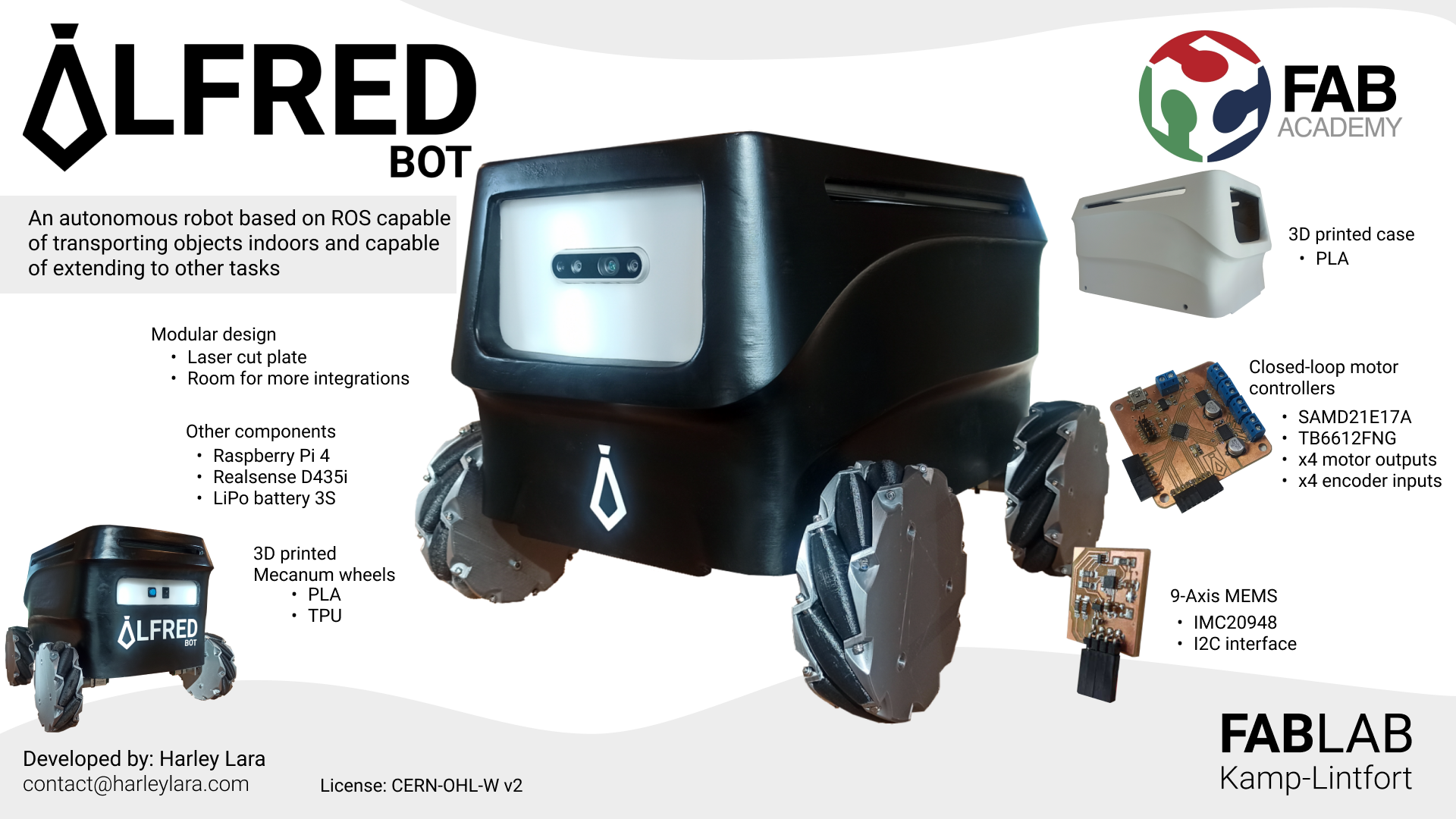Week 17: Invention, intellectual property, and income
My final project of an autonomous wheeled robot which I call AlfredBot comes from the idea of creating a platform to transport objects within the FabLab, and inspired by the spirit of the Fab Academy to be able to share and create (almost) anything, this project is for the whole community with the idea that it is a project of FabLabs for FabLabs and the world.
Besides just being a robot to transport things I see the final project as a future robotics learning platform, it would be amazing that Fab Labs around the world duplicate the platform and develop hardware and software modules to provide AlfredBot with more features, and why not create a community around the project, to keep it alive and getting better and better.
If the project is accepted by the community and more AlfredBots emerge around the world, I would love to make a kind of robotics and ROS course for anyone with an AlfredBot can continue developing, and why not in the future create a simulation environment so that even if you don't have hardware you can learn about robotics.
My plan of dissemination of the final project is to share it in as many sites as possible, like specialized magazines like hackster or makezine, forums and web pages like Instructable and of course how to forget Fablabs.io Projects
I have no future plans to sell this project as a product, because I want to keep it as a open, free and accessible resource. I know that there are some open source products that are sold in the market but for now I do not have the vision to turn this project into a commercial product.
Some features that could be added in the future could be Lidar, GNSS and other sensors, but it could also extend the functionality with a robotic arm and allow it to become a mobile manupulator.
I would love that the project remains free and accessible to anyone, that it does not have so many restrictions as to harm the licensee and force him to release all the components that he can add, but not with too many freedoms to the point of denying access to the source code. That is why I consider that a good balance point is the CERN-OHL-W V2 (weakly-reciprocal license.
CERN Open Hardware Licence Version 2 - Weakly Reciprocal txt pdf
I selected this license after comparing it with some others like Creative Commons, GNU GPL and Apache License. Respect to Creative Commons it has a focus more to the multimedia area it does not have extensions that talk about integrating more hardware/software modules. GNU GPL and Apache License are software-focused licenses that are compatible with each other but only in one direction ("Apache 2 software can therefore be included in GPLv3 projects, because the GPLv3 license accepts our software into GPLv3 works. However, GPLv3 software cannot be included in Apache projects."), however they do not talk about the hardware where the software is running. The reason I chose CERN-OHL-W V2 (weakly-reciprocal) is because it is a license that includes hardware and software and the "weakly-reciprocal" variant I selected especially not to force future licensees to release the hardware/software modules they designed and added, but it is also not completely permissive so that nobody can take the project, modify it and close access to the modifications.
This section contains a draft of the slide and the video clip of the final presentation.
The draft slide contains the content layout that I plan to follow to design the final version.

Regarding the video I don't want to spoiler the final video but here is a sample of the sequences that might appear in the final version. These scribbles are from my Story board in which I have annotations corresponding to the order, camera movements, lighting of the scene, transitions in and out and some additional details.